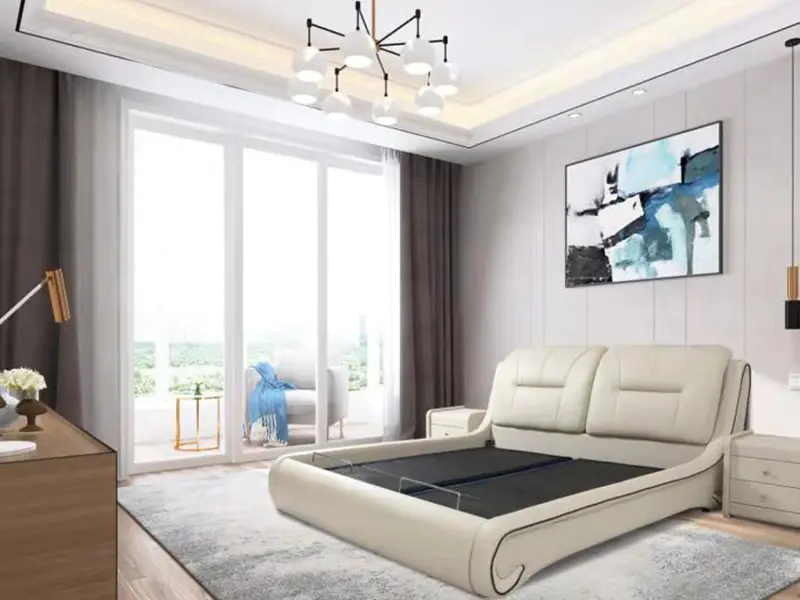Electric smart bed with snore detection and adjustment capabilities use sensors and responsive mechanisms to address snoring issues. Here's an overview of how they work:
Sensor Technology: Smart beds equipped with snore detection utilize sensors embedded within the mattress or bed frame. These sensors are designed to monitor sound, movement, and sometimes even the sleeper's heart rate or breathing patterns.
Snore Detection: The sensors are sensitive to sound frequencies associated with snoring. When the sensors detect snoring sounds, they send signals to the bed's control system.
Control System: The control system processes the signals from the sensors and determines if snoring is occurring. It can distinguish between regular sounds and snoring sounds based on their unique frequency patterns.
Automatic Adjustment: Once snoring is detected, the smart bed's automatic adjustment mechanism comes into play. This mechanism is typically motorized and capable of making subtle changes to the bed's positioning.
Elevation: In response to snoring, the smart bed's adjustment mechanism may slightly elevate the head or upper body of the snoring individual. This elevation helps open the airways, reduce the intensity of snoring, and promote better airflow.

Quiet and Gradual Movement: The adjustment is usually designed to be gradual and quiet, ensuring that it doesn't disrupt the sleeper's rest. The movement is often gentle and subtle, aiming to alleviate snoring without causing disturbances.
Customization: Many smart beds allow users to customize the snore adjustment settings. Users can often adjust the sensitivity of the snore detection, the degree of elevation, and whether they want the adjustment to occur automatically or manually.
Partner-Friendly: Since snoring often affects sleep partners, some smart beds with this feature allow individual adjustment on each side of the bed. If one partner is snoring, only their side of the bed will adjust, leaving the other side unaffected.
Sleep Data: Smart beds that offer snore detection may also collect data on snoring occurrences over time. This data can be accessed through a smartphone app or other connected devices, providing insights into sleep patterns and potential snoring triggers.
